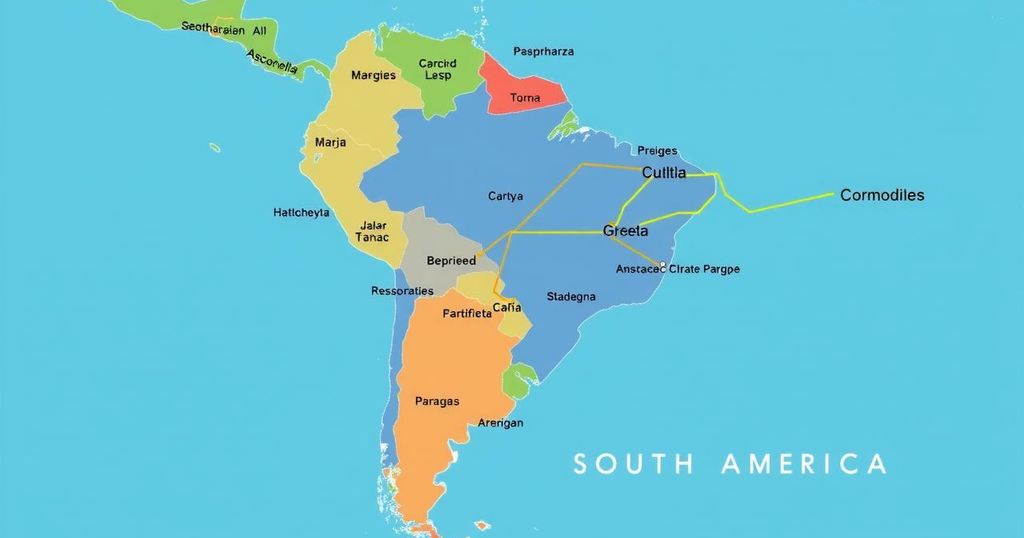Canada is exploring trade diversification toward South America in response to rising American protectionism. The Mercosur trade bloc, which includes major South American nations, remains a key focus for potential agreements. Experts have mixed opinions on the feasibility and benefits of such partnerships, with some suggesting that Canada would be better served exploring Asian and European trade relations.
The increasing American protectionism is compelling Canada to seek trade partners beyond North America, with South America being considered a potential option. Rambod Behboodi, an international trade lawyer, points out that with the United States becoming an unpredictable trade ally, Canada should pursue external commercial partners, especially considering Mercosur—an important trade bloc without a current Canadian trade agreement.
Established in 1991, Mercosur comprises Argentina, Brazil, Paraguay, and Uruguay, which abolished customs duties between them and have a common external tariff (CET) of approximately 11.5 percent. Venezuela’s membership was suspended in 2016, while Bolivia became a full member in 2024. Canada commenced negotiations for a free trade agreement with Mercosur in 2018, yet no agreements have materialized since.
Behboodi emphasizes that without a trade deal, Canada risks missing significant growth opportunities in South America. He observes that the EU recently finalized its trade agreements with Mercosur, which could provide EU goods with a competitive edge, potentially diminishing Canada’s market prospects.
Last year saw Canadian exports from Brazil rise by nine percent to US$6.31 billion, while Canadian imports fell by 18 percent. This trend signifies a fluctuating bilateral relationship. Hilton Nascimento from the Chamber of Commerce Brazil-Canada notes that overall exports have surged by over 60 percent over the past decade.
Canada’s ambassador to Germany, Evelyne Coulombe, advocates for finalizing a Canada-Mercosur agreement, suggesting that it would enhance trade relations, especially in sectors like oil, gas, renewable energy, and IT through technological exchange and collaborative research.
Conversely, Fen Olser Hampson from Carleton University argues against a Canada-Mercosur free trade agreement, proposing that both nations export similar products which would lead to competition rather than collaboration, particularly in industries like aerospace. He suggests a more advantageous focus on trade relations with Asia and Europe instead.
Moreover, Bernardo Blum from the Rotman School of Management advises that an assessment of the EU-Mercosur deal could provide insights into potential trade benefits. Notably, the EU-Mercosur agreement eliminates tariffs on 90 percent of traded goods despite a protracted negotiation process that lasted 25 years due to various concerns.
While some advocate for enhancing relations with Mercosur, Blum cautions that the Canada-Mercosur agreement may not significantly impact Canadian trade. He cites that since the CETA between Canada and the EU was implemented in 2017, only a fraction of Canadian exports to the EU utilized the agreement. This implies that the projected effects on future trade might be limited due to a smaller Mercosur trading bloc compared to the EU.
The exploration of trade diversification towards South America, particularly through Mercosur, has sparked considerable debate. While some experts highlight potential benefits for Canada’s economy by forging new agreements, others express skepticism about the actual impact and competitiveness against pre-existing trade relationships with the United States and Europe. Therefore, the future of Canada-Mercosur negotiations remains uncertain amid fluctuating global trade dynamics.
Original Source: financialpost.com






